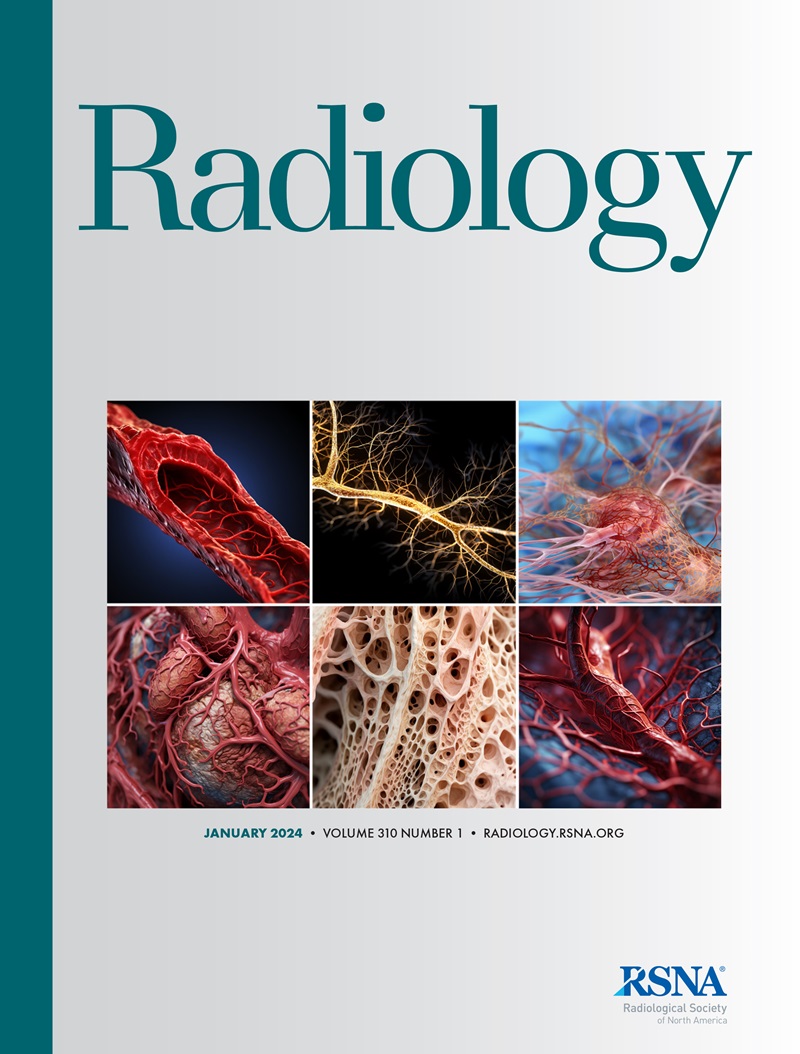CT Honeycombing and Traction Bronchiectasis Extent Independently Predict Survival across Fibrotic Interstitial Lung Disease Subtypes.
Daniel-Costin Marinescu, Cameron J Hague, Nestor L Muller, Darra Murphy, Andrew Churg, Joanne L Wright, Amna Al-Arnawoot, Ana-Maria Bilawich, Patrick Bourgouin, Gerard Cox, Celine Durand, Tracy Elliot, Jennifer Ellis, Jolene H Fisher, Derek Fladeland, Amanda Grant-Orser, Gillian C Goobie, Zachary Guenther, Ehsan Haider, Nathan Hambly, James Huynh, Kerri A Johannson, Geoffrey Karjala, Nasreen Khalil, Martin Kolb, Lauren Lapointe-Shaw, Jonathon Leipsic, Stacey Lok, Sarah MacIsaac, Micheal McInnis, Helene Manganas, Veronica Marcoux, John Mayo, Julie Morisset, Ciaran Scallan, Tony Sedlic, Shane Shapera, Kelly Sun, Victoria Tan, Alyson W Wong, Boyang Zheng, Christopher J Ryerson
求助PDF
{"title":"CT Honeycombing and Traction Bronchiectasis Extent Independently Predict Survival across Fibrotic Interstitial Lung Disease Subtypes.","authors":"Daniel-Costin Marinescu, Cameron J Hague, Nestor L Muller, Darra Murphy, Andrew Churg, Joanne L Wright, Amna Al-Arnawoot, Ana-Maria Bilawich, Patrick Bourgouin, Gerard Cox, Celine Durand, Tracy Elliot, Jennifer Ellis, Jolene H Fisher, Derek Fladeland, Amanda Grant-Orser, Gillian C Goobie, Zachary Guenther, Ehsan Haider, Nathan Hambly, James Huynh, Kerri A Johannson, Geoffrey Karjala, Nasreen Khalil, Martin Kolb, Lauren Lapointe-Shaw, Jonathon Leipsic, Stacey Lok, Sarah MacIsaac, Micheal McInnis, Helene Manganas, Veronica Marcoux, John Mayo, Julie Morisset, Ciaran Scallan, Tony Sedlic, Shane Shapera, Kelly Sun, Victoria Tan, Alyson W Wong, Boyang Zheng, Christopher J Ryerson","doi":"10.1148/radiol.241001","DOIUrl":null,"url":null,"abstract":"<p><p>Background Prognostic value of radiologic features in interstitial lung disease (ILD) has been predominantly studied in idiopathic pulmonary fibrosis, but findings vary. The relative importance of features versus guideline-defined patterns in predicting outcomes is unknown. Purpose To identify radiologic features that are independently associated with transplant-free survival beyond clinical predictive factors across all ILD subtypes, and to identify whether individual features versus patterns are more important for prognostication. Materials and Methods This is a secondary analysis of the prospective Canadian Registry for Pulmonary Fibrosis. Consecutive patients with ILD were evaluated in standardized multidisciplinary discussions between January 2021 and March 2022. Radiologic features on thin-section CT images were quantified, and guideline-defined usual interstitial pneumonia (UIP) and fibrotic hypersensitivity pneumonitis (fHP) patterns were assigned. Multivariable Cox analysis was used to assess the associations of radiologic features with transplant-free survival, and nested models were used to test the relative importance of features compared with patterns. Results A total of 1593 patients (mean age, 66 years ± 12 [SD]; 800 male) were included. The following four features were associated with transplant-free survival: extent of honeycombing (hazard ratio, 1.20; 95% CI; 1.06, 1.36 per 10% increase in lung involvement; <i>P</i> = .005), extent of traction bronchiectasis (hazard ratio, 1.18; 95% CI: 1.10, 1.26 per 10% increase; <i>P</i> < .001), pulmonary artery diameter (hazard ratio, 1.03; 95% CI: 1.01; 1.04 per 1-mm increase; <i>P</i> = .002), and presence of subpleural sparing (hazard ratio, 0.76; 95% CI: 0.56, 0.96; <i>P</i> = .03). Guideline-defined patterns were not independently associated with survival in a model that included these four radiologic features, each of which retained its prognostic value. Conclusion The extent of fibrosis was predictive of worse outcomes across all ILD subtypes in a dose-dependent fashion and independent of well-recognized clinical prognostic factors. Guideline-defined UIP and fHP patterns each helped risk-stratify patients in isolation but lost prognostic value when accounting for the extent of fibrosis, suggesting that their previous association with mortality is based on these patterns acting as surrogates for a greater extent of fibrosis. © RSNA, 2025 <i>Supplemental material is available for this article.</i> See also the editorial by Wells in this issue.</p>","PeriodicalId":20896,"journal":{"name":"Radiology","volume":"314 2","pages":"e241001"},"PeriodicalIF":12.1000,"publicationDate":"2025-02-01","publicationTypes":"Journal Article","fieldsOfStudy":null,"isOpenAccess":false,"openAccessPdf":"","citationCount":"0","resultStr":null,"platform":"Semanticscholar","paperid":null,"PeriodicalName":"Radiology","FirstCategoryId":"3","ListUrlMain":"https://doi.org/10.1148/radiol.241001","RegionNum":1,"RegionCategory":"医学","ArticlePicture":[],"TitleCN":null,"AbstractTextCN":null,"PMCID":null,"EPubDate":"","PubModel":"","JCR":"Q1","JCRName":"RADIOLOGY, NUCLEAR MEDICINE & MEDICAL IMAGING","Score":null,"Total":0}
引用次数: 0
引用
批量引用
Abstract
Background Prognostic value of radiologic features in interstitial lung disease (ILD) has been predominantly studied in idiopathic pulmonary fibrosis, but findings vary. The relative importance of features versus guideline-defined patterns in predicting outcomes is unknown. Purpose To identify radiologic features that are independently associated with transplant-free survival beyond clinical predictive factors across all ILD subtypes, and to identify whether individual features versus patterns are more important for prognostication. Materials and Methods This is a secondary analysis of the prospective Canadian Registry for Pulmonary Fibrosis. Consecutive patients with ILD were evaluated in standardized multidisciplinary discussions between January 2021 and March 2022. Radiologic features on thin-section CT images were quantified, and guideline-defined usual interstitial pneumonia (UIP) and fibrotic hypersensitivity pneumonitis (fHP) patterns were assigned. Multivariable Cox analysis was used to assess the associations of radiologic features with transplant-free survival, and nested models were used to test the relative importance of features compared with patterns. Results A total of 1593 patients (mean age, 66 years ± 12 [SD]; 800 male) were included. The following four features were associated with transplant-free survival: extent of honeycombing (hazard ratio, 1.20; 95% CI; 1.06, 1.36 per 10% increase in lung involvement; P = .005), extent of traction bronchiectasis (hazard ratio, 1.18; 95% CI: 1.10, 1.26 per 10% increase; P < .001), pulmonary artery diameter (hazard ratio, 1.03; 95% CI: 1.01; 1.04 per 1-mm increase; P = .002), and presence of subpleural sparing (hazard ratio, 0.76; 95% CI: 0.56, 0.96; P = .03). Guideline-defined patterns were not independently associated with survival in a model that included these four radiologic features, each of which retained its prognostic value. Conclusion The extent of fibrosis was predictive of worse outcomes across all ILD subtypes in a dose-dependent fashion and independent of well-recognized clinical prognostic factors. Guideline-defined UIP and fHP patterns each helped risk-stratify patients in isolation but lost prognostic value when accounting for the extent of fibrosis, suggesting that their previous association with mortality is based on these patterns acting as surrogates for a greater extent of fibrosis. © RSNA, 2025 Supplemental material is available for this article. See also the editorial by Wells in this issue.


